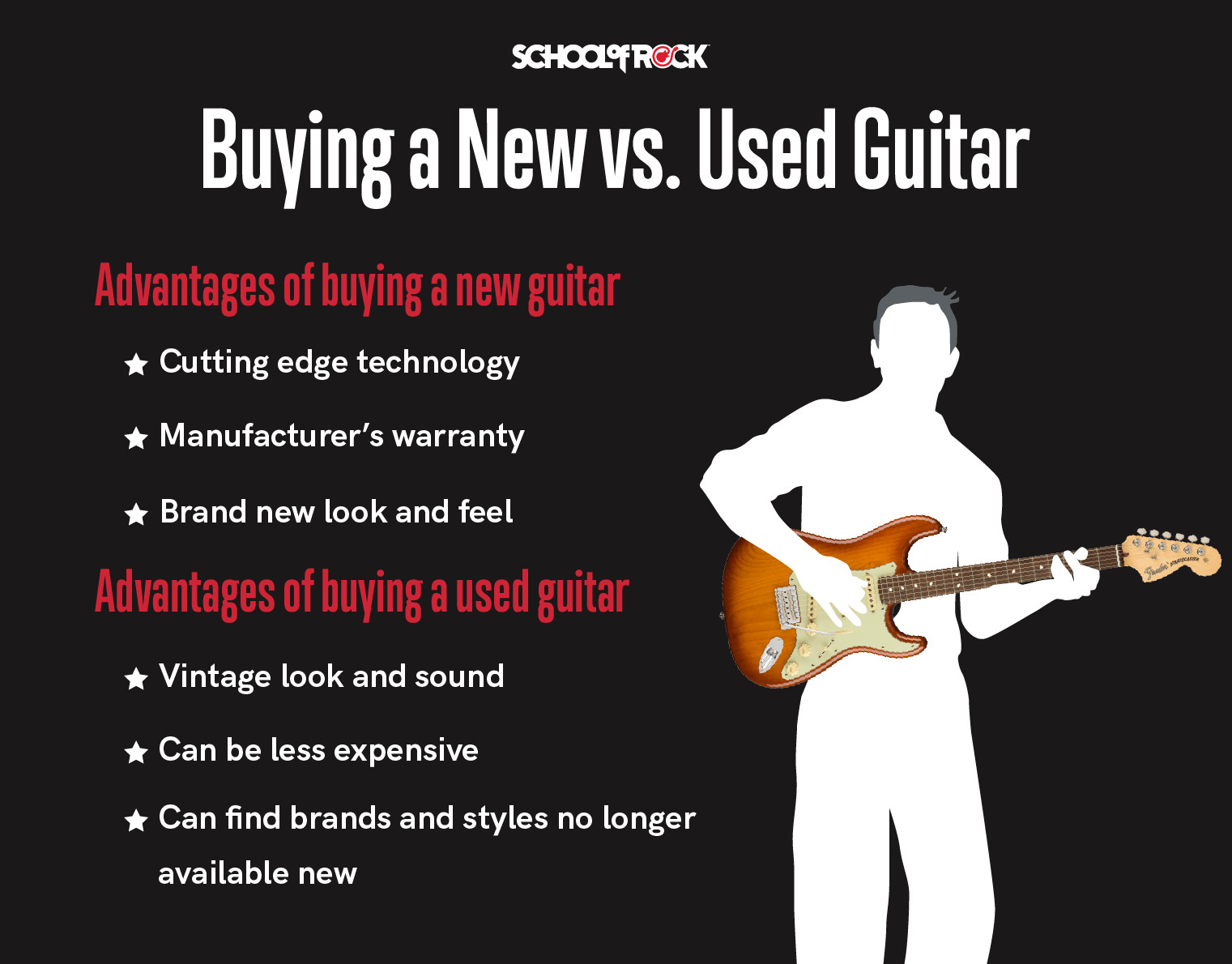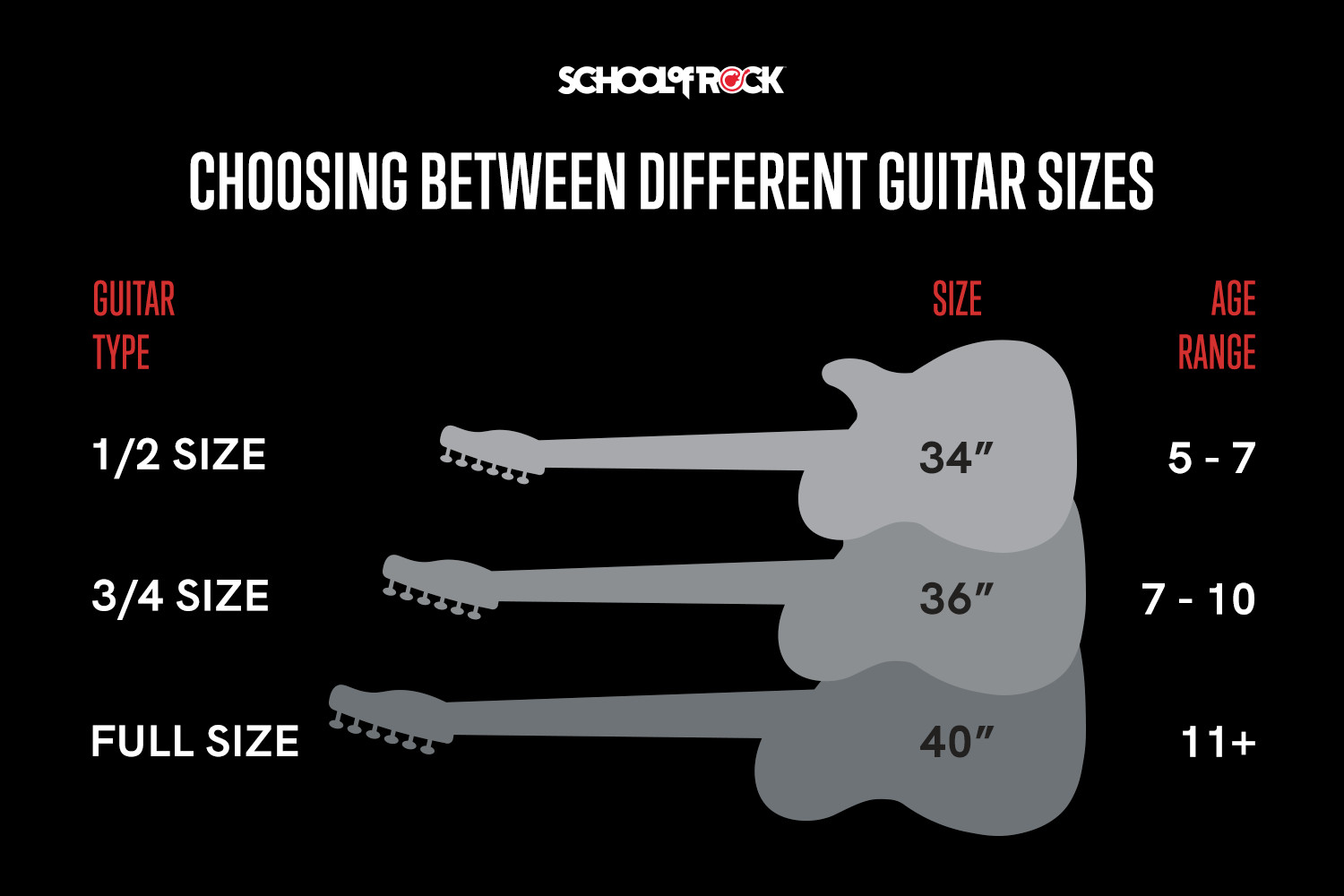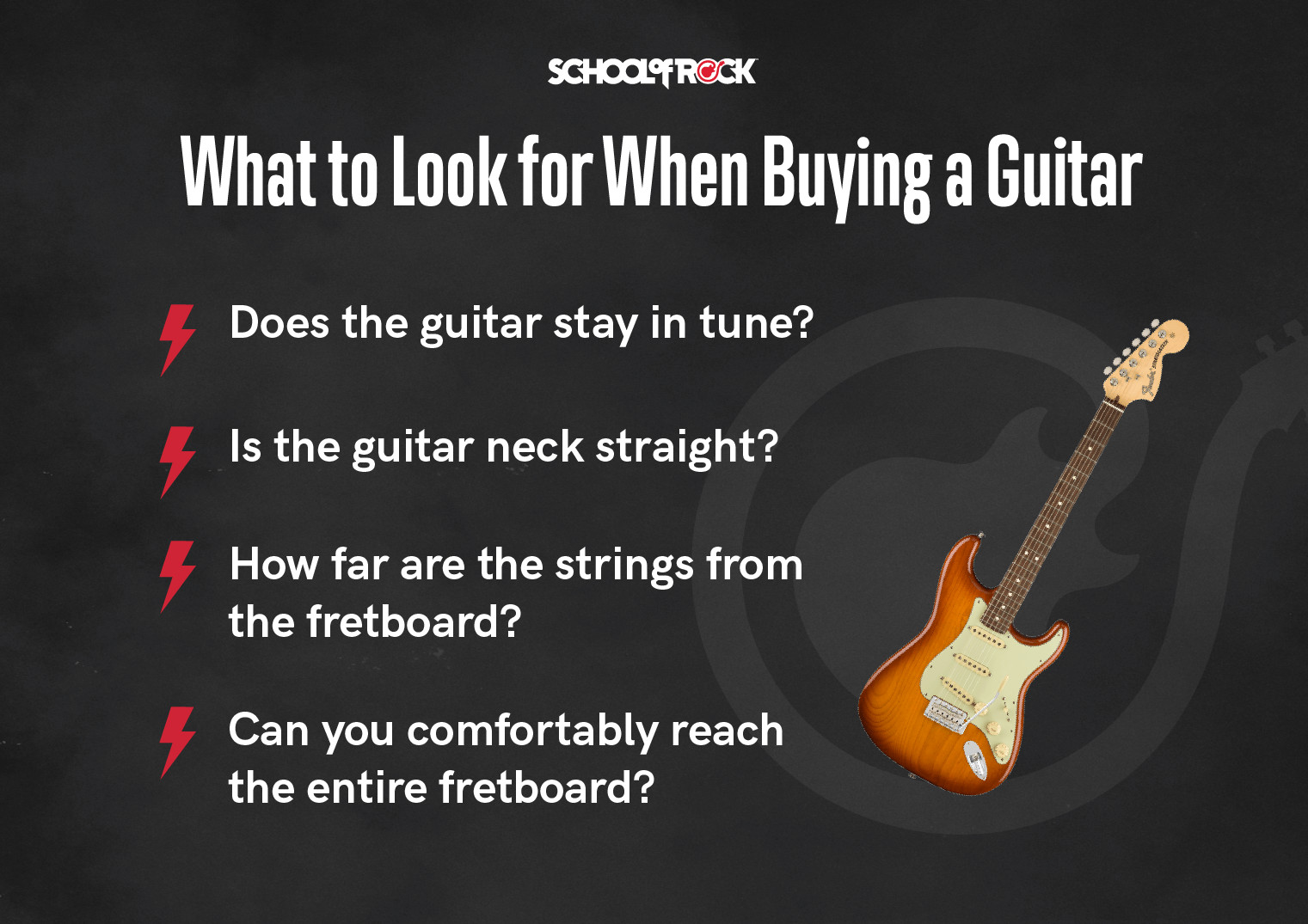Choosing a good guitar for beginners can be exciting! This comprehensive guide from guitarplayers.net simplifies the process, helping aspiring guitarists find an instrument that inspires them to learn and play. We’ll cover everything from acoustic versus electric guitars to finding the right size and essential accessories, ensuring you get the most out of your musical journey with guitar playing techniques.
1. Understanding the Different Types of Guitars
What are the main types of guitars and which is best for a beginner? The main types of guitars are acoustic, electric, and acoustic-electric, each offering distinct sounds and playability; generally, an electric guitar is often recommended for beginners due to its easier playability. Electric guitars, acoustic guitars, and acoustic-electric guitars each have unique characteristics that cater to different musical styles and player preferences. Understanding these differences is key to selecting the best beginner guitar.
1.1. Electric Guitars: A Popular Choice for Modern Music
What makes electric guitars popular among beginners? Electric guitars are popular for beginners because they are easier to play and highly versatile for many music styles. Electric guitars produce a very faint sound on their own and need to be connected to an amplifier to be fully heard. This allows the player to control the volume, which can be ideal for practicing in various environments.
1.1.1. Advantages of Electric Guitars
What are the key advantages of learning on an electric guitar? The key advantages of electric guitars include easier playability due to thinner necks and lighter strings, availability in various sizes for young players, versatility in producing a range of tones, and frequent use in popular music styles.
- Easier Playability: Electric guitars typically have a narrower neck and lighter gauge strings, making them easier to fret and play, especially for beginners.
- Variety of Sizes: Electric guitars are available in various sizes, making them suitable for players of all ages and sizes.
- Versatile Tones: When paired with an amplifier, electric guitars can produce a wide range of tones suitable for rock, metal, pop, blues, jazz, country, and R&B.
- Volume Control: The volume can be adjusted using the amplifier, allowing for quiet practice or louder performance.
 Electric guitar setup for beginners
Electric guitar setup for beginners
1.1.2. Disadvantages of Electric Guitars
What are the potential drawbacks of starting with an electric guitar? A key potential drawback is that electric guitars require additional accessories like an amplifier and a cable.
- Additional Accessories: Electric guitars require an amplifier and a connector cable to produce a full sound, which adds to the initial cost.
- Dependency on Electricity: Electric guitars require a power source for the amplifier, limiting their portability compared to acoustic guitars.
1.2. Acoustic Guitars: A Rich, Unamplified Sound
Why might someone choose an acoustic guitar as a beginner? An acoustic guitar is an excellent choice for beginners due to its simplicity and rich, unamplified sound, making it ideal for genres like folk and country. Acoustic guitars produce a rich sound without any electric amplification and are commonly used in genres like folk, singer-songwriter, country, and bluegrass.
1.2.1. Advantages of Acoustic Guitars
What are the benefits of learning on an acoustic guitar? The benefits of acoustic guitars are that they don’t require amplification, can be amplified with a removable pickup, produce a bright sound perfect for chords, and allow for investment in a better instrument by saving money on an amp.
- No Amplification Required: Acoustic guitars produce sound naturally, without the need for an amplifier.
- Portability: Acoustic guitars are highly portable and can be played anywhere without needing a power source.
- Bright Sound: Acoustic guitars have a bright and clear sound that is excellent for playing chords and vocal accompaniment.
- Potential for Savings: The money saved by not needing an amplifier can be used to purchase a higher-quality acoustic guitar.
1.2.2. Disadvantages of Acoustic Guitars
What are the drawbacks of choosing an acoustic guitar for beginners? Drawbacks include the need for additional equipment for amplification, limited range of sounds, thicker strings that are harder to play, and potential for poorly made beginner models.
- Amplification Challenges: Many acoustic guitar models require additional equipment for plugging into an amp or sound system, making it challenging to be heard while playing with a band.
- Limited Tonal Range: Acoustic guitars have a more limited range of sounds and tones compared to electric guitars.
- Harder to Play: Acoustic guitars typically have thicker strings, which can be harder to press down, especially for beginners.
- Quality Concerns: Some short-scale and beginner acoustic guitar models may be poorly made, affecting playability and sound quality.
 Acoustic guitar for beginners
Acoustic guitar for beginners
1.3. Acoustic-Electric Guitars: The Best of Both Worlds
What is an acoustic-electric guitar and why might it be a good option? An acoustic-electric guitar combines the advantages of both acoustic and electric guitars, offering the natural sound of an acoustic with the option to amplify when needed. These guitars function and sound like acoustic guitars but can be plugged into an amp or sound system for amplified performance. Most acoustic-electric guitars also have onboard equalizers for tone control.
1.3.1. Advantages of Acoustic-Electric Guitars
What benefits do acoustic-electric guitars offer to players? Benefits of acoustic-electric guitars include versatility in various settings, ability to amplify sound without changing the natural tone, and tone control via onboard equalizers.
- Versatility: Acoustic-electric guitars can be played acoustically or amplified, making them suitable for various settings, from intimate practice sessions to large venue performances.
- Natural Tone Amplification: Acoustic-electric guitars amplify the natural sound of the instrument without significantly altering its tonal characteristics.
- Onboard Tone Control: Most acoustic-electric guitars have onboard equalizers that allow players to adjust the tone to suit their preferences and the acoustics of the venue.
1.3.2. Disadvantages of Acoustic-Electric Guitars
What are the potential downsides of choosing an acoustic-electric guitar? The main downside is the higher cost due to the electronic hardware.
- Higher Cost: Acoustic-electric guitars tend to be more expensive than standard acoustic guitars due to the inclusion of electronic hardware like pickups and preamps.
- Battery Dependence: Acoustic-electric guitars require batteries to power the onboard electronics, which need to be replaced periodically.
2. Key Considerations When Buying a Guitar
What should you look for when buying a guitar? When buying a guitar, consider its tuning stability, neck straightness, string action, fretboard reach, and electronics condition. Since buying a guitar online doesn’t allow a hands-on experience before it arrives, inspecting these factors in person is essential. Guitar manufacturers often cut costs by minimizing the final setup of the instrument, leaving fine-tuning to the consumer.
2.1. Tuning Stability: Does the Guitar Stay in Tune?
Why is tuning stability important? Tuning stability is important because it ensures the guitar maintains its pitch, making it easier to play in tune and learn effectively. Have someone at the store tune the guitar to standard tuning and play a few chords. If the playing sounds terrible, it might be due to a difficult instrument to play.
2.2. Neck Straightness: Checking for Curves or Bends
What should you look for when checking the guitar neck? Check the neck of the guitar for any curves or bends, as a straight neck ensures proper playability and prevents string buzzing. Ideally, the guitar should have a straight neck to prevent the strings from hitting the frets while playing.
2.3. String Action: How Far Are the Strings from the Fretboard?
Why is string action an important factor? The action of a guitar is how the strings relate to the fretboard; it impacts playability and comfort. If the strings are too far from the neck or the neck is noticeably curved, it might be best to choose a different instrument.
2.4. Fretboard Reach: Can You Comfortably Reach the Entire Fretboard?
Why is it important to be able to reach the entire fretboard? Being able to comfortably reach the entire fretboard ensures that you can play a wide range of notes and chords without strain. Run your finger along each side of the neck to feel for any fret ends sticking out.
2.5. Electronics Condition: Testing the Components
What should you check when examining the electronics of an electric guitar? Check that the electronics are in good condition by plugging the guitar into an amp and toggling all the switches and knobs to listen for any crackling sounds. If you hear any crackling, it indicates dirty internal electronics that may need fixing.
3. New vs. Used Guitars: Weighing the Options
What are the pros and cons of buying a new versus a used guitar? Buying a used guitar can be a great way to acquire a high-end instrument at a lower price, but new guitars come with cutting-edge technology and a manufacturer’s warranty. High-end guitars age well if cared for, and many professional musicians use classic models from manufacturers like Fender and Gibson that are fifty to sixty years old.
3.1. Advantages of Buying a New Guitar
What benefits come with buying a new guitar? Buying new offers cutting-edge technology, a manufacturer’s warranty, and a brand-new look and feel.
- Cutting-Edge Technology: New guitars often incorporate the latest advancements in guitar manufacturing, such as improved pickups, electronics, and construction techniques.
- Manufacturer’s Warranty: New guitars typically come with a manufacturer’s warranty that covers defects in materials and workmanship, providing peace of mind.
- Brand New Look and Feel: New guitars have a pristine appearance and a fresh feel, free from any wear and tear.
 New guitar purchase
New guitar purchase
3.2. Advantages of Buying a Used Guitar
What are the potential benefits of buying a used guitar? Buying used can provide a vintage look and sound, lower cost, and the opportunity to find brands and styles no longer available new.
- Vintage Look and Sound: Used guitars, especially older models, often have a unique vintage look and a well-worn sound that can be highly desirable.
- Lower Cost: Used guitars are typically less expensive than new guitars, making them an attractive option for budget-conscious buyers.
- Rare Finds: Buying used can provide the opportunity to find rare or discontinued brands and styles that are no longer available new.
4. Selecting the Right Guitar Size
Why is guitar size important for beginners? Guitar size is crucial for beginners, as the correct size ensures comfort and playability, especially for younger students. Incorrect guitar sizes can affect the ability to play, and young students may struggle with full-size guitars due to the width of the neck, heavier weight, and wider fret spacing.
4.1. Guitar Sizing Chart
What guitar size is recommended for different age groups? Generally, a half-size guitar is recommended for ages 5-7, a three-quarter size guitar for ages 7-10, and a full-size guitar for ages 11 and up.
4.2. Total Length vs. Scale Length of a Guitar
What is the difference between total length and scale length, and why does it matter? Total length is the overall length of the guitar, while scale length is the string length between the nut and saddle; scale length affects string tension and playability. The scale length is the measurement of the string length between the nut and saddle, which is the vibrating part of the string when played. A shorter scale length means less tension on the strings, making them easier to fret.
5. Top Guitar Brands for Beginners
What are some recommended guitar brands for beginners? Fender Squier and Gibson Epiphone are two of the biggest names in guitar manufacturing with affordable sub-brands that are an easy go-to choice.
5.1. Fender Squier vs. Gibson Epiphone: A Comparison
Why are Fender Squier and Gibson Epiphone recommended for beginners? Both brands have a range of options for first-time players, such as starter packs that include a guitar, amp, cable, and all the trimmings. Both brands also have small-scale options for younger students: Fender Squier Mini and Epiphone Junior.
5.1.1. Are These Brands Good for Beginners?
Are Squier and Epiphone guitars suitable for beginners? Yes, both brands offer beginner-friendly options with starter packs and small-scale models.
5.2. Other Recommended Guitar Brands for Beginners
What other brands offer good beginner guitars? Other good guitar brands for beginners include PRS (Paul Reed Smith), Gretsch, and Schecter, all of which offer quality instruments at various price points.
6. Where to Buy a Guitar for Beginners
Why is it recommended to buy a guitar in person? It is recommended to buy a guitar in person so that you can see, hold, feel, and hear the instrument before purchasing it. You should always visit a guitar shop to get a sense of the sound and feel of different guitars.
7. Essential Guitar Accessories
What accessories are needed to start playing the guitar? Essential guitar accessories include guitar amps, instrument cables, headphones, guitar tuners, guitar picks, guitar straps, extra strings, and a guitar case.
7.1. Basic Guitar Accessories
What are the must-have accessories for new guitar players? The must-have accessories are guitar amps (for electric guitars), instrument cables, headphones, a tuner, picks, a strap, extra strings, and a case.
- Guitar Amps: An amplifier is a necessary accessory for an electric guitar. A small practice amp will suffice for newer students.
- Instrument Cable: The instrument cable connects the electric guitar to the amp. A 10’ cable or larger should suffice.
- Headphones: Headphones are useful for keeping practice volume down.
- Guitar Tuner: A tuner is a necessary accessory for any type of guitar.
- Guitar Picks: Guitar picks are used to strike the strings. Medium picks are good for beginners.
- Guitar Straps: All electric guitars and most acoustic guitars are set up for use with a strap.
- Extra Strings: Guitar strings occasionally break through regular use, so an extra set of strings is a good investment.
- Guitar Case: A guitar case protects the instrument during travel.
8. Guitarplayers.net: Your Partner in Learning Guitar
Ready to take your guitar playing to the next level? At guitarplayers.net, we provide resources to enjoy playing your instrument first and build a broader foundation of music concepts.
At guitarplayers.net, we offer total beginners the opportunity to perform on stage within a few months, building confidence and creating lasting memories with like-minded individuals.
8.1. Explore Our Resources
- Lessons: Access a variety of guitar lessons tailored to all skill levels, from beginner to advanced.
- Reviews: Read detailed reviews of guitars, amps, and accessories to make informed decisions.
- Sheet Music: Discover a vast library of sheet music for various genres and skill levels.
- Community Forum: Join our community forum to connect with fellow guitar enthusiasts, share tips, and ask questions.
8.2. Call to Action
Visit guitarplayers.net today to explore our lessons, find sheet music, read reviews, and join our thriving community of guitar players in the USA! Contact us at 1140 Boylston Street, Boston, MA 02215, United States, or call +1 (617) 747-2261.
FAQ: Choosing a Good Guitar for Beginners
FAQ 1: What is the best type of guitar for a complete beginner?
The best type of guitar for a complete beginner is often an electric guitar due to its easier playability with thinner necks and lighter strings.
FAQ 2: How do I choose the right size guitar?
To choose the right size guitar, consider the player’s age and height. Generally, half-size guitars are for ages 5-7, three-quarter size for ages 7-10, and full-size for ages 11 and up.
FAQ 3: What are the essential accessories I need when buying a guitar?
Essential accessories include a guitar amp (for electric guitars), instrument cable, headphones, guitar tuner, guitar picks, guitar strap, extra strings, and a guitar case.
FAQ 4: Is it better to buy a new or used guitar for a beginner?
It depends on the budget and goals. New guitars come with a warranty and the latest technology, while used guitars can be more affordable and offer a vintage feel.
FAQ 5: What should I look for when inspecting a guitar before buying?
Inspect the guitar for tuning stability, neck straightness, string action, fretboard reach, and electronics condition.
FAQ 6: Which guitar brands are recommended for beginners?
Fender Squier and Gibson Epiphone are often recommended due to their affordable beginner-friendly models.
FAQ 7: Can I learn guitar online, or do I need in-person lessons?
Both online and in-person lessons can be effective. Online resources offer flexibility, while in-person lessons provide personalized feedback and guidance.
FAQ 8: How important is the guitar’s tone for a beginner?
While advanced tone nuances may not be critical initially, the guitar should sound pleasant and inspiring to the beginner to encourage practice.
FAQ 9: What is the difference between acoustic and acoustic-electric guitars?
Acoustic guitars produce sound naturally, while acoustic-electric guitars have built-in pickups that allow them to be plugged into an amplifier.
FAQ 10: How often should I change my guitar strings?
How often you change your guitar strings depends on how often you play, but generally, changing them every 1-3 months is a good practice to maintain sound quality.
By considering these factors and exploring the resources at guitarplayers.net, you can confidently choose a guitar that sets you or your loved one on a path to musical success.
